Excerpts from Jim Conrad's
Naturalist Newsletter
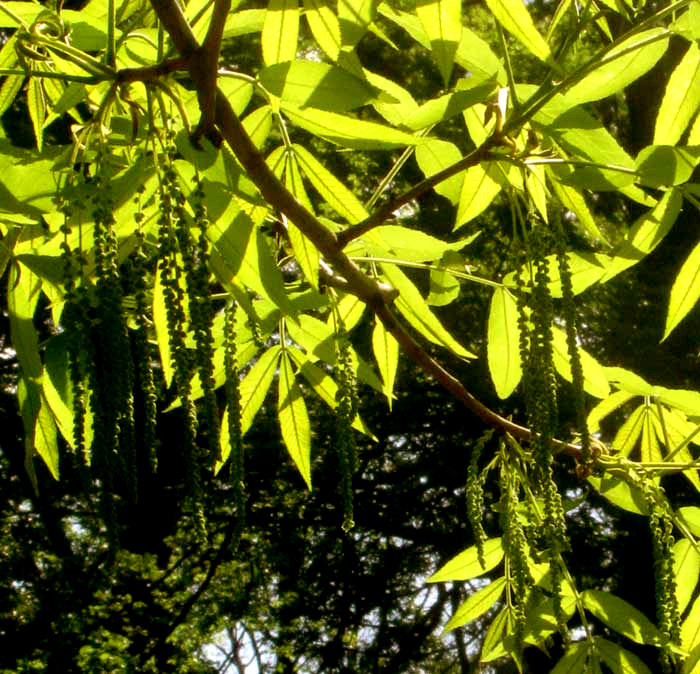
from the the April 8, 2012 Newsletter, issued from the woods a few miles east of Natchez, Mississippi:
PIGNUTS FLOWERING
The Pignut Hickories are flowering, their yellow-green, four-inch-long (10cm) catkins of stacked male flowers dangling among sunlight engorged, pinnately compound leaves (mostly 5-7 leaflets), as shown above. So early in the season it's hard to find female flowers, unless you know what you're looking for. I found them, nothing but tiny, pale yellow tufts at the tips of twigs recently expanded from buds, as shown below:
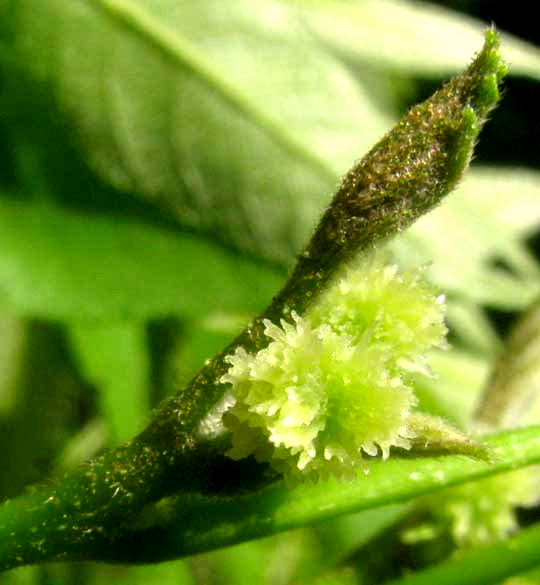
In that picture the brown-hairy item pointing toward the top, right is the beginning of a leaf. On the leaf's right side you see four green protuberances. The top one is the future leaf's terminal leaflet and the three lower ones are future lower leaflets. Three similar bumps arise on the other side, accounting for a future compound leaf with seven leaflets.
Bark of the tree's ft-wide trunk is shown below:
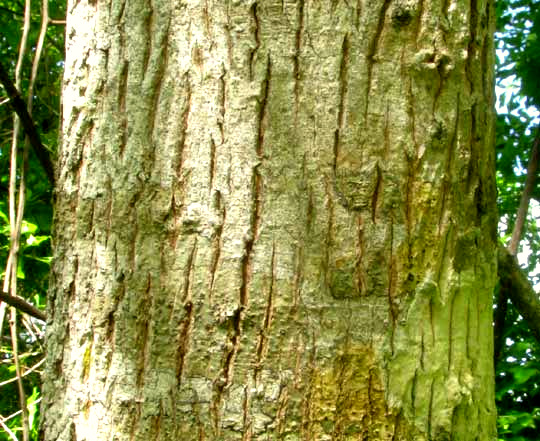
Beneath the tree I had to scrape lots of leaf litter away before finding the nut remnants shown below:
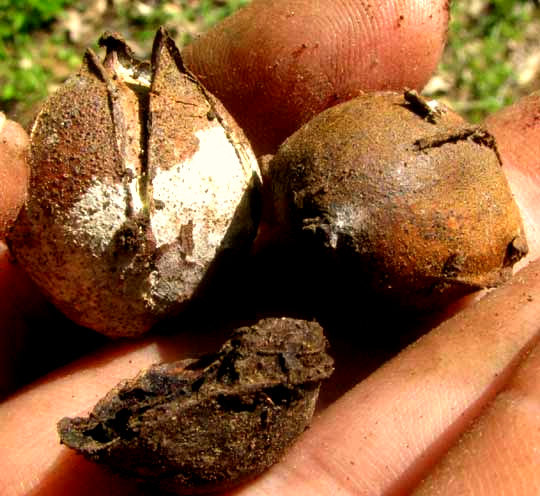
Notice that on these mature pignuts the husk is thin and splits only about halfway to the nut's base. Also, the edges of the splitting husk sections turn up just a bit, forming a low, thin "wing" where the section edges meet. These two features help distinguish this species from similar pignut taxa that produce husks that split to the base, and whose husk sections don't form "wings."
But, here's something interesting: A three minute stroll away a similarly flowering Pignut turned up with nuts beneath it bearing husks that split all the way to the nuts' bases, and the bark of that tree was flakier than that shown above.
In the old days, figuring out our local pignut taxa was frustrating. In fact, now we know that it was more than that -- it was basically "a fool's task." Back then we just didn't know how slippery pignut taxonomy was. Here's what the Flora of North America says about CARYA GLABRA, which is the technical name we'd give our local pignuts IF we had to give a traditional binomial technical name:
Carya glabra is a highly polymorphic species. Tight- barked trees bearing large pear-shaped fruits are common along the Gulf Coast... Trees with exfoliating bark, reddish petioles, and small, compressed, ellipsoid fruits that dehisce to the base... are more common at higher latitudes. Carya glabra intergrades with C. floridana, C. pallida, and C. texana, and it is reported to hybridize with the diploid C. cordiformis...
From what I see here, this "polymorphism," this intergrading and hybridizing are not rare, isolated incidents. I seem to find as many non-standard trees as I do those neatly fitting the basic description of Carya glabra.
Whatever the taxonomy of this species, nothing detracts from the enormous value of its hickory nuts to the local ecosystem. It was hard for me to find nuts below the trees because so many critters eat them -- squirrels, chipmunks, foxes, Raccoons, mice, rats, rabbits, and even Wild Turkeys, Crows, Bluejays, woodpeckers and other birds. Crude fat content in the nuts of some hickories reaches as high as 80%. Of course humans can eat the nuts, too, raw or cooked, though pignuts are smaller than those of some hickory species, and few people bother with them.
from the March 23, 2009 Newsletter, issued from the forest near Natchez, Mississippi; elevation ~400ft (120m), ~N31.47°, ~W91.29°:
A HICKORY'S UNFURLING LEAVES
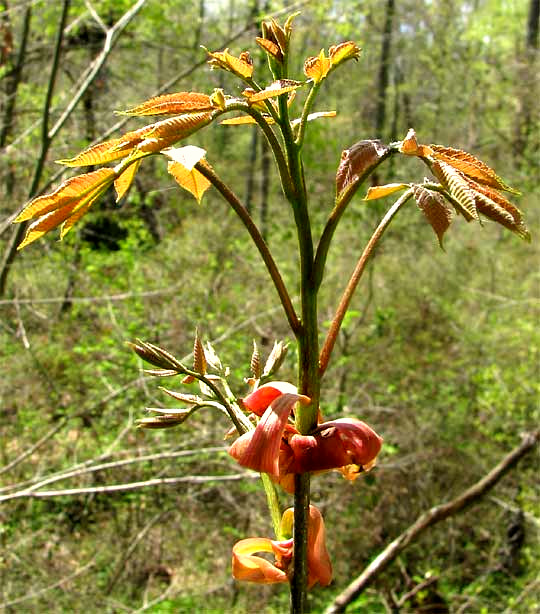
Above one of our pignut hickories, of the CARYA GLABRA-OVALIS complex, is shown unfurling its compound leaves. Each leaf bears five or seven leaflets. A pretty thing that hickories do when spring's leaf-bearing stems emerge from a twig's terminal buds like this is that the former buds' inner scales enlarge tremendously, becoming fleshy and colored. You can see such pink, inner scales in the picture curling back at the base of the vertical new stem. There's a special botanical word describing things that enlarge after flowering or after something has emerged from its bud, and that's "accrescent." A hickory's inner bud scales are beautifully accrescent.
This pignut hickory's accrescent inner bud scales are about two inches long. Hickories with heavier stems and bigger buds, such as Shagbarks and Mockernuts, produce even larger overwintering buds with accrescent inner bud scales growing well over three inches long.
Of what use are a hickory's accrescent inner bud scales? I'm guessing that they might distract caterpillars climbing their stems looking for succulent leaves by offering fleshy meals of non- photosynthesizing and thus non-critical tissue, but that's only a guess.